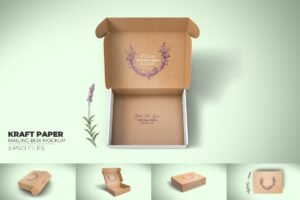I. Introduction
Cardboard boxes and cases play a crucial role in our daily lives and various industries. They are ubiquitous, serving as essential containers for storage, transportation, and protection of goods.
II. Types of Cardboard Boxes
A. Regular shipping boxes are the common choice for general-purpose shipping, available in different sizes to accommodate a wide range of items.
B. Corrugated boxes are designed for heavy-duty applications, providing enhanced strength and durability to safeguard bulky or delicate items.
C. Special-shaped boxes, such as those for electronics or oddly shaped products, are custom-made to fit the specific requirements of particular goods.
III. Features and Benefits of Cardboard Boxes
A. Their lightweight nature makes them easy to maneuver and handle during handling and shipping processes.
B. They are cost-effective, making them a preferred choice for businesses to manage packaging expenses.
C. Offer good protection against impacts, vibrations, and other external forces.
D. The recyclability of cardboard boxes is a significant advantage, contributing to environmental sustainability.
IV. Applications of Cardboard Boxes
A. In the retail industry, they are used to package and display products on store shelves.
B. For food packaging, ensuring the freshness and safety of edibles during transit and storage.
C. In the logistics and transportation sector, they are the backbone for moving goods efficiently from one place to another.
V. Different Kinds of Cases
A. Wooden cases offer sturdiness and are often used for heavy and valuable items.
B. Plastic cases are lightweight yet durable, suitable for various applications.
C. Metal cases provide excellent protection and are commonly used in specialized industries.
VI. Characteristics and Advantages of Each Type of Case
A. Wooden cases are known for their durability and strength, capable of withstanding rough handling.
B. Plastic cases offer the advantage of being lightweight while maintaining durability and are resistant to moisture and corrosion.
C. Metal cases are highly resistant to corrosion and can provide superior protection in harsh environments.
VII. Uses of Cases in Specific Scenarios
A. For valuable and fragile items, cases ensure their safe transportation and storage, minimizing the risk of damage.
B. In industrial settings, cases are used to protect precision equipment and components.
VIII. Emerging Trends and Innovations in Cardboard Boxes & Cases
A. Smart packaging with sensors is being developed to monitor the condition of the contents during transit.
B. There is a growing focus on using eco-friendly materials and designs to reduce the environmental impact.
IX. Conclusion
Cardboard boxes and cases are integral to modern commerce and logistics. Their significance lies not only in their practicality but also in their adaptability to various needs. Looking forward, continuous innovation and a focus on sustainability will shape their future development, ensuring they remain an essential part of our lives and industries for years to come.






